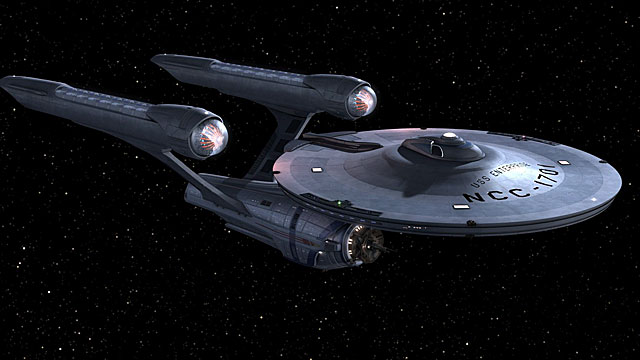
Star Trek, the TV show that captured imaginations and dealt with complex political and social issues is 50 years old.
On September the 8th 1966 the first episode of the TV series was aired and so began a fictional look into the future of space travel. Its success can be partly attributed to the space race between the USA and then USSR during the height of the cold war, the longevity of the show boosted by the 1969 spaceflight that landed humans on the moon.
With intrigue in space exploration spiking, the TV show provided a glimpse into a fictional future, but one that isn’t too far detached from reality – at least when it comes to technology.
One of the amazing things that Star Trek achieved was to inspire the creation (or at least spark the imagination) of technologies which have changed the modern tech world.
CBR highlights some of the technology which was inspired by Star Trek.
1. Tablets
The tablet device is now pretty much common place but it first appeared as a “Personal Access Display Device” in Star Trek, Captain Kirk would regularly be seen using a tablet with a stylus.
Although the basic concept for a tablet can be traced back to 1888 and an Elisha Gray patent for an electrical stylus device for capturing handwriting, it is Star Trek which brought it into the minds of the general public.
Tablets didn’t really become commercially available until 1989 but several Tablet PC-like devices were proposed before this.
Image credit: Paramount
2. Voice interface computers
Ever used Siri? Alexa? Cortana? Well one of the significant influencers of this kind of technology can be traced back to Star Trek.
Captain Jean Luc Picard frequently called out order to the on-board computer of the Enterprise. The technology introduced by Apple on the 4S was back in 2011 but the idea was around long before that in Star Trek.
Star Trek hasn’t been the only influencer of this technology as Cortana, Microsoft’s personal assistant, was an AI style assistant in the popular gaming series Halo.
3. Google Glass
Google Glass may have turned out to be a little bit of a flop but it is another technology that can be linked to Star Trek.
In the Deep Space Nine version of the TV show, virtual display devices were used by characters called the Dominion. These took the shape of headsets, in addition to a shoulder mounted version, and they gave the wearer the ability to view the space around the ship my turning their head.
Ok, so it’s not exactly like Google Glass, but the connection can be made.
4. Teleconferencing
Yes we had telephones in 1966 but the idea of video conferencing across large distances was nowhere to be seen.
The first in-depth telepresence experience was introduced in 2008 thanks to work by AT&T and Cisco. Making the technology work properly requires a combination of audio, video, and ambient lighting working together.
The roots of this idea can actually be attributed to The Jetsons in 1962, and AT&T showed off a version of the technology at the 1964/65 New York World Fair. However, it also played a prominent role in Star Trek.
In the first episode, The Man Trap, Captain Kirk uses the technology and it is then widely used throughout many of the episodes of the hit show.
5. Tractor beam
That’s right, a tractor beam exists!
In 2015 it was revealed that engineers in the UK had developed a system that could grab, hold, and move small objects without touching them.
‘What is this witchcraft?’ I hear you say; well it uses “holograms” made of sound waves. The engineers found that an object sitting in a “quiet” region of space could be held there if it is surrounded by very high-intensity sound waves.
The movement is then controlled by the shifting of the pattern boundary.
It was revealed in Nature Communications that they could manipulated pea-sized objects from 30-40cm away with a grid of small speakers emitting ultrasound in intricate, shifting patterns.
Special mention should also be given to the idea of flip phones. From the early days of Star Trek the communicator was on display, a flip phone style device that would allow ‘away teams’ to communicate with the Enterprise.
The size of them was not too different from the flip phones we became use to, but they didn’t offer the same features.
Now all we have to wait for are Warp drives, Transporters and Holodecks.






